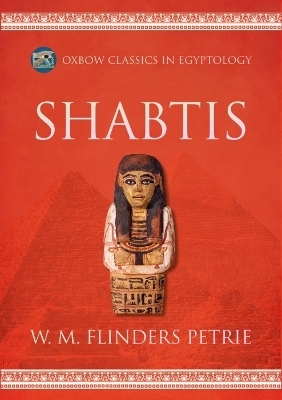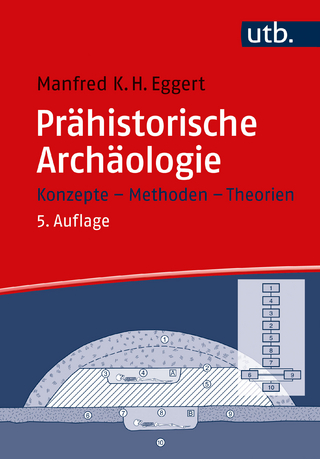
Shabtis
Seiten
2023
Casemate Publishers (Verlag)
979-8-88857-006-7 (ISBN)
Casemate Publishers (Verlag)
979-8-88857-006-7 (ISBN)
- Titel nicht im Sortiment
- Artikel merken
Reissue of the first, comprehensive study of shabtis (inscribed funeral statuettes) from Egypt, with illustrated inscriptions, transliterations and over 650 photographed statuettes.
This is a facsimile edition of the 1972 reissue of Flinders Petrie’s 1914 pioneering typological catalogue of Egyptian Shabtis, one of a number of such catalogues to be reissued in this new series.
Shabtis, funeral statuettes made of stone or timber, were frequently encountered in early tomb and cemetery excavations. Petrie identified and describes a chronological sequence of development from simple statuettes emphasising the head, which appear to be substitutes for real heads that were often removed from the body, through to later detailed forms that he recognised as substitutes for the mummy. He presents a discussion of the formula used in the inscriptions, their royal and sacred affinities, and identifies examples of additional texts. The examination of forms, formulaic inscriptions, materials and dating evidence is accompanied by transliteration of names, illustrated inscriptions, and over 650 photographed statuettes.
This volume is part of a new series comprising facsimile re-issues of typological catalogues produced between 1898 and 1937 by W. M. Flinders Petrie, based on his vast collection of Egyptian artefacts. Mostly excavated by Petrie during many seasons of campaign in the latter years of the 19th and early decades of the 20th century, these artefacts now reside in the Petrie Museum at University College, London. Long out of print, the catalogues were re-issued in facsimile by publishers Aris & Phillips in the 1970s alongside newly-commissioned titles, based on more recent examination of elements of the Petrie Collection by contemporary experts. The Oxbow Classics in Egyptology series makes a selection of these important resources available again in print for a new generation of students and scholars.
This is a facsimile edition of the 1972 reissue of Flinders Petrie’s 1914 pioneering typological catalogue of Egyptian Shabtis, one of a number of such catalogues to be reissued in this new series.
Shabtis, funeral statuettes made of stone or timber, were frequently encountered in early tomb and cemetery excavations. Petrie identified and describes a chronological sequence of development from simple statuettes emphasising the head, which appear to be substitutes for real heads that were often removed from the body, through to later detailed forms that he recognised as substitutes for the mummy. He presents a discussion of the formula used in the inscriptions, their royal and sacred affinities, and identifies examples of additional texts. The examination of forms, formulaic inscriptions, materials and dating evidence is accompanied by transliteration of names, illustrated inscriptions, and over 650 photographed statuettes.
This volume is part of a new series comprising facsimile re-issues of typological catalogues produced between 1898 and 1937 by W. M. Flinders Petrie, based on his vast collection of Egyptian artefacts. Mostly excavated by Petrie during many seasons of campaign in the latter years of the 19th and early decades of the 20th century, these artefacts now reside in the Petrie Museum at University College, London. Long out of print, the catalogues were re-issued in facsimile by publishers Aris & Phillips in the 1970s alongside newly-commissioned titles, based on more recent examination of elements of the Petrie Collection by contemporary experts. The Oxbow Classics in Egyptology series makes a selection of these important resources available again in print for a new generation of students and scholars.
Sir William Matthew Flinders Petrie (1853–1942) was a pioneer in the field of ‘modern’ archaeology. He introduced the stratigraphical approach in his Egyptian campaigns that underpins modern excavation techniques, explored scientific approaches to analysis and developed detailed typological studies of artefact classification and recording, which allowed for the stratigraphic dating of archaeological layers. He excavated and surveyed over 30 sites in Egypt, including Giza, Luxor, Amarna and Tell Nebesheh.
1. Substitute for the body
2. The substitute for the mummy
3. The growth of the shuabti
4. Growth of the shuabti formula
5. Other texts on shuabtis
6. Forms and materials of shuabtis
7. Transliterations
Index
Plates
| Erscheinungsdatum | 12.05.2023 |
|---|---|
| Zusatzinfo | Fully illustrated with photographs |
| Sprache | englisch |
| Maße | 210 x 296 mm |
| Themenwelt | Kunst / Musik / Theater |
| Geisteswissenschaften ► Archäologie | |
| Geschichte ► Allgemeine Geschichte ► Vor- und Frühgeschichte | |
| Geschichte ► Allgemeine Geschichte ► Altertum / Antike | |
| ISBN-13 | 979-8-88857-006-7 / 9798888570067 |
| Zustand | Neuware |
| Informationen gemäß Produktsicherheitsverordnung (GPSR) | |
| Haben Sie eine Frage zum Produkt? |
Mehr entdecken
aus dem Bereich
aus dem Bereich
auf den Spuren der frühen Zivilisationen
Buch | Hardcover (2023)
C.H.Beck (Verlag)
20,00 €
Konzepte – Methoden – Theorien
Buch | Softcover (2024)
UTB (Verlag)
39,90 €


